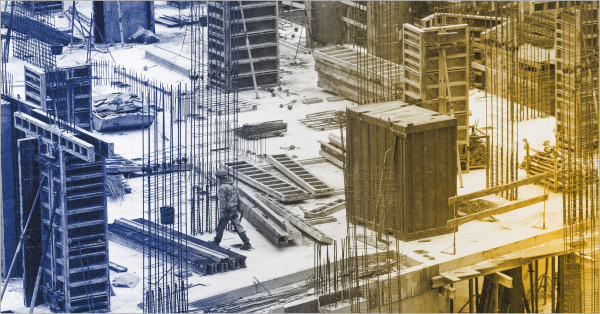Building your dream project in India? Best wishes to you!!
Whether you are constructing a home, a commercial complex, or a high-rise marvel, the journey from blueprint to reality is exciting—but also full of risks. Construction sites are vulnerable to unexpected events like natural disasters, theft, accidents, or structural damages. These unforeseen incidents can derail your budget, timeline, and peace of mind. That’s where Builders Insurance steps in. This essential coverage safeguards your construction project against potential financial losses, ensuring that your dream stays on track despite the challenges. In this blog, we will explain everything you need to know about Builders Insurance in India—its benefits, costs, and why it’s a must-have for any builder or contractor.
What is Builders Insurance?
Builder’s Insurance, more commonly referred to as Builder’s Risk Insurance, is a specialised policy designed to protect construction projects against financial losses caused by unforeseen events such as fire, wind, theft, lightning, explosion, and vandalism. It offers coverage for a broad range of risks, including property damage, third-party liabilities, and injuries to workers. A Builder’s Risk Insurance Policy can protect against losses to:
- Buildings
- Building materials and equipment
- Supplies
- Foundations
- Fixtures
- Debris removal
This risk insurance policy is essential for various stakeholders involved in construction, including builders, contractors, property developers, and even project financiers. In India, where construction activities are booming, Builders Insurance acts as a safety net to handle the complexities and uncertainties of the construction industry.
Common Coverages in Builders Insurance Policies
A typical Builder’s Risk Insurance Policy provides a range of coverages tailored to protect construction projects from diverse risks. Here’s a detailed list of the coverages typically included in Builder’s Risk Insurance:
- Property, Materials, and Equipment Damage:
It offers coverage for physical loss or damage to:- Construction materials and equipment, on-site or in transit.
- Partially completed structures.
- Machinery used in construction.
- Third-Party Liability:
It offers coverage for legal liabilities arising from:- Accidental injuries to third parties.
- Damage to neighbouring properties or structures caused by construction activities.
Example: Compensation for a neighbouring building damaged due to excavation work.
This risk insurance coverage is crucial for projects in urban or densely populated areas.
- Workers’ Compensation:
This coverage is usually separate from a Builder’s Risk Insurance Policy but may be mandatory under Indian law, such as the Employee’s Compensation Act. It offers coverage for workers who suffer injuries or fatalities during the construction process, including:- Medical expenses for treatment.
- Compensation for income loss due to temporary or permanent disabilities.
- Financial assistance for the family in case of death.
This builder’s insurance coverage ensures workforce safety and legal compliance under labour laws.
- Contractors’ All Risks (CAR) Coverage:
This policy combines:- Physical damage to the project (materials, structures, equipment).
- Third-party liability for injuries or property damage.
CAR coverage is typically required for larger or high-risk construction projects, especially when dealing with third-party risk exposure.
- Natural Disaster and Force Majeure Coverage:
It offers coverage for losses due to extreme natural events like earthquakes, landslides, floods, or cyclones. The Builder’s Risk Insurance Policy provides essential protection for projects located in disaster-prone areas. - Equipment and Machinery Breakdown:
Covers repair or replacement costs of construction machinery (such as cranes, bulldozers, concrete mixers, etc.) damaged due to accidents or mechanical failures. Thus, Builder’s Insurance ensures continuity of construction activities with minimal disruptions. - Transit Coverage:
It offers coverage for construction materials or equipment while in transit to the site from events such as theft, accidents, or damage during transportation. - Loss of Revenue Due to Project Delays:
Builder’s insurance compensates for financial losses arising from delays caused by insured risks, such as fire, natural disasters, or theft. - Theft and Pilferage:
A Builder’s Risk Insurance Policy covers the theft or pilferage of construction materials, tools, or equipment from the site. - Customisable Add-Ons:
- Coverage for damage due to faulty design: Protects against losses from structural failures caused by design errors.
- Environmental liability coverage: Provides risk insurance coverage for damages caused to the environment during construction.
- Terrorism coverage: For damages caused by acts of terrorism.
- Employee Group Accident Cover: A Builder’s Risk Insurance Policy provides additional financial security to workers injured in accidents on-site.
- Fire Coverage:
This risk insurance policy covers damages to the construction site and materials caused by accidental fires.
These coverages ensure that builders, contractors, and stakeholders are protected from the financial repercussions of unexpected events, making Builder’s Risk Insurance a critical component of risk management in India’s construction industry.
Common Exclusions in Builders Risk Insurance Policies
Here are the common exclusions in a typical Builder’s Risk Insurance Policy in India:
- Wilful Negligence: Losses or damages caused by deliberate neglect or misconduct.
- Defective Design: Typically, damages arising from faulty design, poor workmanship, or substandard materials are excluded unless specifically included under the policy. Some policies may cover design defects if explicitly negotiated.
- Pre-Existing Damage: Losses or damages existing before the Builder’s Risk Insurance Policy was activated.
- Normal Wear and Tear: Gradual deterioration or depreciation of materials and equipment.
- Contractual Liabilities: Claims arising from contractual obligations unless explicitly covered.
- Uninsurable Delays: Delays in project completion not caused by insured events.
- Nuclear and War Risks: Damages caused by nuclear reactions, wars, or similar hostilities.
- Intentional Acts: Fraudulent claims or damages caused intentionally by the insured.
- Fines and Penalties: Legal fines, penalties, or punitive damages.
- Environmental Pollution: Losses resulting from contamination or pollution unless specifically included.
These exclusions highlight the importance of thoroughly reviewing policy terms and customising the risk insurance coverage to suit project-specific needs.
Why is Builders Insurance Important?
A Builder’s Risk Insurance Policy is not just an optional safety measure; it’s a necessity for anyone involved in construction. Here’s why:
- Financial Security: Construction projects involve substantial investments. A single incident, such as a fire or structural collapse, can lead to significant financial losses. Builder’s Insurance protects against such unforeseen expenses, ensuring the project’s financial health.
- Legal Compliance: In many cases, Builders Insurance may be required by law or as part of contractual agreements with clients, lenders, or Government authorities. In India, Workers’ Compensation Insurance is a legal requirement for construction projects employing workers, as mandated under the Employee’s Compensation Act.
- Protection for Workers: The construction workforce is the backbone of any project. Ensuring their safety and covering potential medical expenses fosters trust and boosts morale, leading to better project outcomes.
- Risk Mitigation: From natural disasters to theft, builder’s insurance helps mitigate risks, ensuring the project stays on schedule and within budget, even in challenging circumstances.
- Enhanced Credibility: Having Builder’s Insurance enhances a builder’s reputation and credibility, instilling confidence in clients, investors, and partners.
What Determines the Cost of Builders Insurance?
Builder’s Risk Insurance typically costs 1–5% of the total construction budget. The cost can be affected by several factors, including:
- Project Size and Value
Impact: Larger and higher-value projects typically require higher coverage, resulting in higher premiums.
Example: A small residential building will have lower premiums compared to a multi-story commercial complex. - Type of Construction
Impact: The nature of construction (residential, commercial, industrial, or infrastructure) affects the cost due to varying risk levels.
Example: High-risk industrial projects like chemical plants attract higher premiums. - Project Location
Impact: Geographical factors such as proximity to flood zones, earthquake-prone regions, or high-crime areas significantly affect premiums.
Example: Projects in disaster-prone areas, such as flood-prone or seismic zones, may require add-ons, increasing costs. - Coverage and Add-Ons
Impact: The scope of coverage, including optional add-ons like equipment breakdown or theft protection, influences the premium.
Example: Policies with broader coverage and customisations are more expensive. - Duration of the Project
Impact: Longer projects are exposed to risks for an extended period, leading to higher premiums.
Example: A one-year project will cost less to insure than a three-year infrastructure project. - Claims History
Impact: Builders or contractors with a history of frequent claims may face higher premiums due to perceived higher risk.
Example: A contractor with a clean track record may receive discounts. - Safety Measures
Impact: Implementation of robust safety measures, such as worker training, fire safety systems, and theft prevention protocols, can lower premiums.
Example: Projects with certified safety compliance may receive favorable rates. - Insurer’s Underwriting Practices
Impact: Different insurers have unique criteria and risk evaluation methods, leading to variations in premiums.
Example: Some insurers may offer competitive rates for specific types of construction projects.
Understanding these factors helps builders and contractors estimate insurance costs and select policies that balance coverage needs with affordability.
The Bottomline:
Builder’s Insurance is a vital tool for protecting construction projects in India. It ensures financial security, compliance with Indian construction regulations, and peace of mind for all stakeholders involved. From covering property damages to safeguarding workers, Builder’s Insurance provides comprehensive protection against the myriad risks associated with construction. Evaluate your needs, consult with insurance experts, and secure your project’s future with Builder’s Insurance today.








